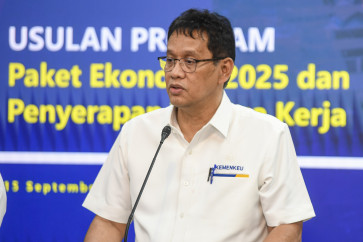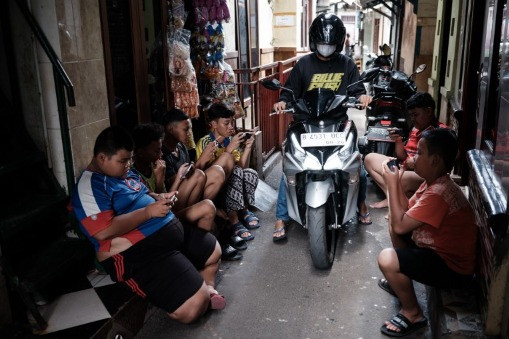Popular Reads
Top Results
Can't find what you're looking for?
View all search resultsPopular Reads
Top Results
Can't find what you're looking for?
View all search resultsProtecting the environment through mangrove eco-tourism
A small fishing community in Sei Nagalawan, Serdang Bedagai, North Sumatra, has undergone some major changes since the Kayuh Baimbai Fishermen’s Union was founded in 1998, which succeeded in freeing its members from the binds of middlemen
Change text size
Gift Premium Articles
to Anyone
A
small fishing community in Sei Nagalawan, Serdang Bedagai, North Sumatra, has undergone some major changes since the Kayuh Baimbai Fishermen’s Union was founded in 1998, which succeeded in freeing its members from the binds of middlemen. With the formation of the Muara Tanjung Women’s Union in 2005, the community again benefitted, this time from a savings and loan facility that gave its 20 member families a source of income through small businesses.
In 2009, the community formed another organization, this time aiming to address concerns over massive environmental damage to the area, particularly coastal abrasion. Massive abrasion of the Nipah River and its delta ecosystem peaked in 1994 as result of the expansion of shrimp and fish farms.
“The mangroves were chopped down to allow farms to go right to the coast,” says Sutrisno, the chairman of the Muara Baimbai Mangrove Conservation Group.
“It used to be easy to find fish and crabs. But since the abrasion started, it has become very difficult to get a good catch.
“It’s not just residents’ homes that are under threat; it’s also the coastal flora and fauna. This has made us concerned for our future as fishermen.”
In an effort to prevent further damage, Sutrisno and the community began to plant mangroves. Every week, dozens of residents work tirelessly to plant mangroves with seedlings they buy or get as donations from various government institutions.
Thanks to Sutrisno’s strong leadership, the Muara Baimbai Mangrove Conservation Group, with its 60 members, has now planted more than 15,000 mangrove trees.
This achievement has brought the group through the second phase of the 2011 Community Entrepreneurs Challenge, an effort by the British Council to support community-based enterprises in Indonesia. Winners receive seed funding to support their endeavors.
Sutrisno and his community have continued to learn of the benefits of mangroves and explain these benefits to other residents.
“Children now understand the role of mangrove wetlands as a fish breeding ground, a stopover site for migratory birds, a habitat for wildlife, a buffer against land and wind abrasion, a filter of saltwater intrusion as well as dangerous heavy metals,” says Ahmad Yani, a member of the group.
Now, dense mangrove forests cover around 5 hectares of this coastal area and the community has begun to benefit from their hard work.
“Catches have improved and are better quality compared to when there were no mangroves. Fish such as sembilang and mullet, as well as herons, are now often seen in the mangrove area,” says Iwan, a fisherman and member of the group.
The community is now planning to develop its project by turning the area into a tourist site. The coastal area, which was once flooded with water, has now become an area that can be used for environmental and eco-tourism education.
”We plan to make an educational tour package that covers many angles,” says Jumiati, the head of the Muara Tanjung Women’s Union. “This hamlet has a lot of potential. Besides giving visitors a chance to canoe in between mangrove forests and learn about the ecosystem, we will provide them with our fish and unique produce.”
“The fishermen and women’s groups here are very strong and active, so I am optimistic they will do a good job running the mangrove tourism project,” says Serdang Bedagai Tourism Agency chief Herlan Panggabean. “Nothing can work, no matter how nice the location and beautiful the environment is, without support from the community. So, I see a very bright future for the Muara Baimbai [project].”










